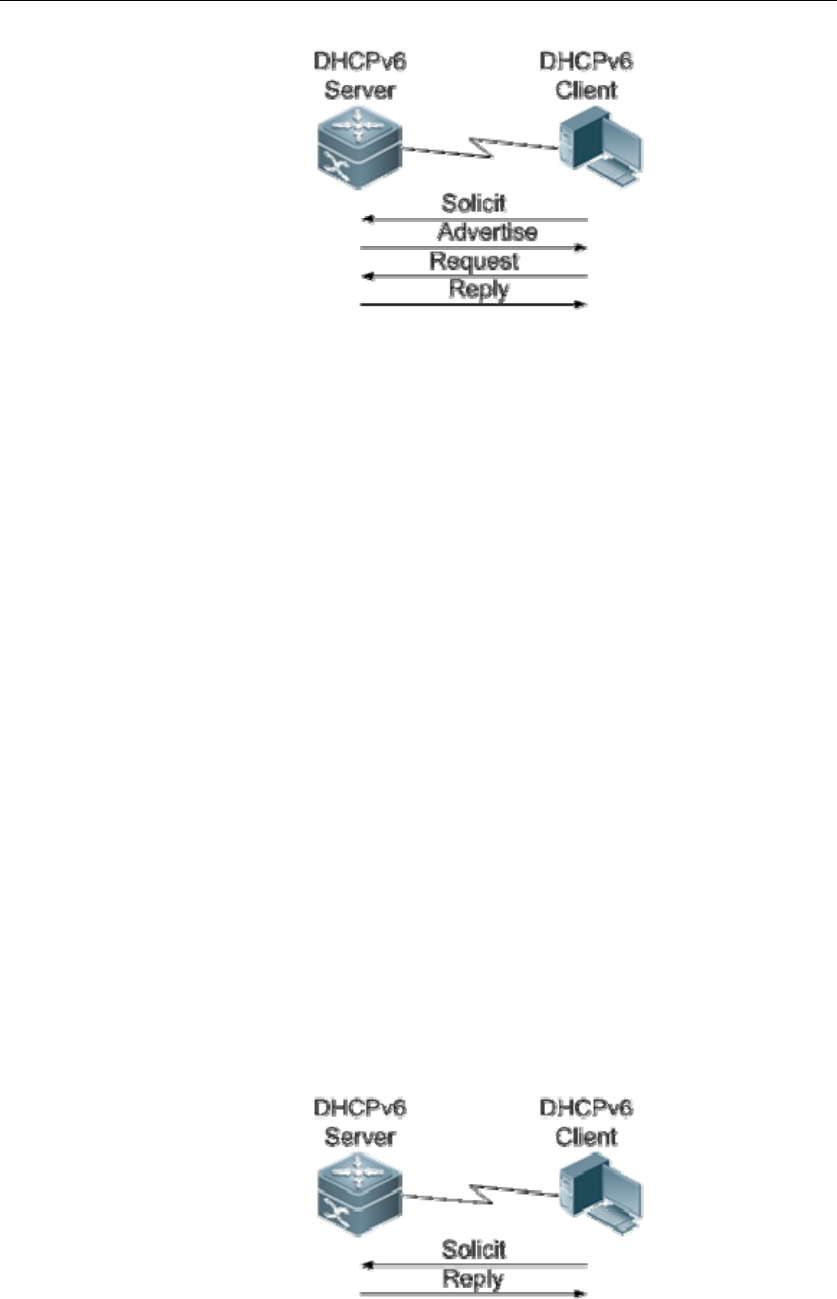
DES-7200 Configuration Guide Chapter 7 DHCPv6 Server Configuration
7-6
Fig 1. Typical DHCPv6 address assignment
The above figure is a typical process of DHCPv6 address assignment:
1. DHCPv6 Client sends a multicast Solicit message with destination address being
FF02::1:2 and destination UDP port being 547 to the local link, and this message will
be received by all DHCPv6 Servers and DHCPv6 Relays on the local link. Multicast is
used instead of broadcast because broadcast has been abolished in the IPv6
network.
2. After receiving the multicast Solicit message, the DHCPv6 Server will reply with a
unicast Advertise message.
3. After selecting the Server, the DHCPv6 Client will send a multicast Request
message with destination address being FF02::1:2 and destination UDP port being
547 to the local link.
4. After receiving the Request message, DHCPv6 Server will send a unicast Reply
message to complete the configuration process.
As mentioned above, such a 4-message DHCPv6 interaction is very similar to the
4-message interaction in DHCPv4 (Discover - Offer - Request - Reply). By utilizing
the option of Rapid Commit, the 4-message interaction can be simplified into
2-message interaction (Solicit - Reply). If the Client includes this option in the Solicit
message, the Server will send Reply message after receiving the corresponding
message, as shown below:


















